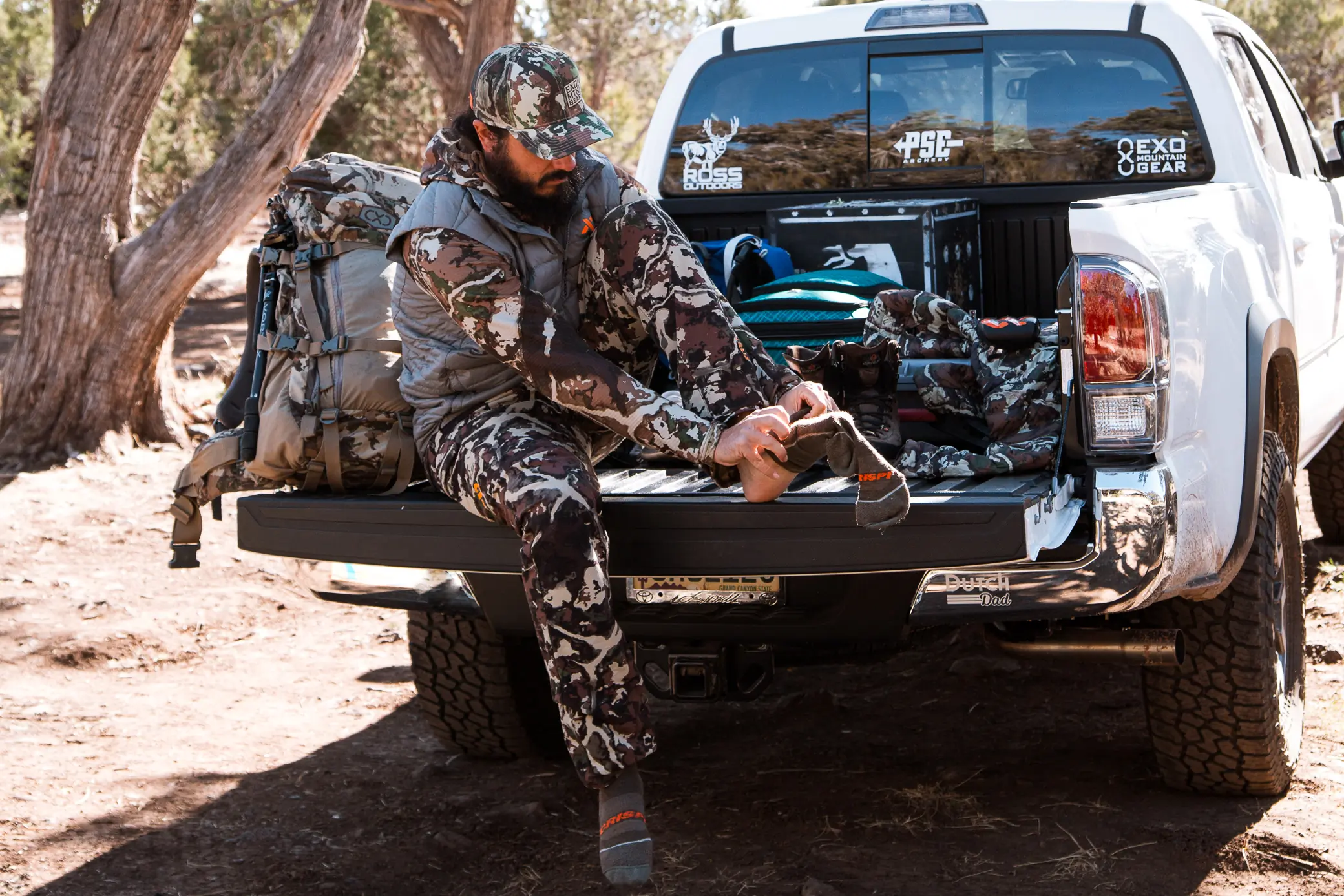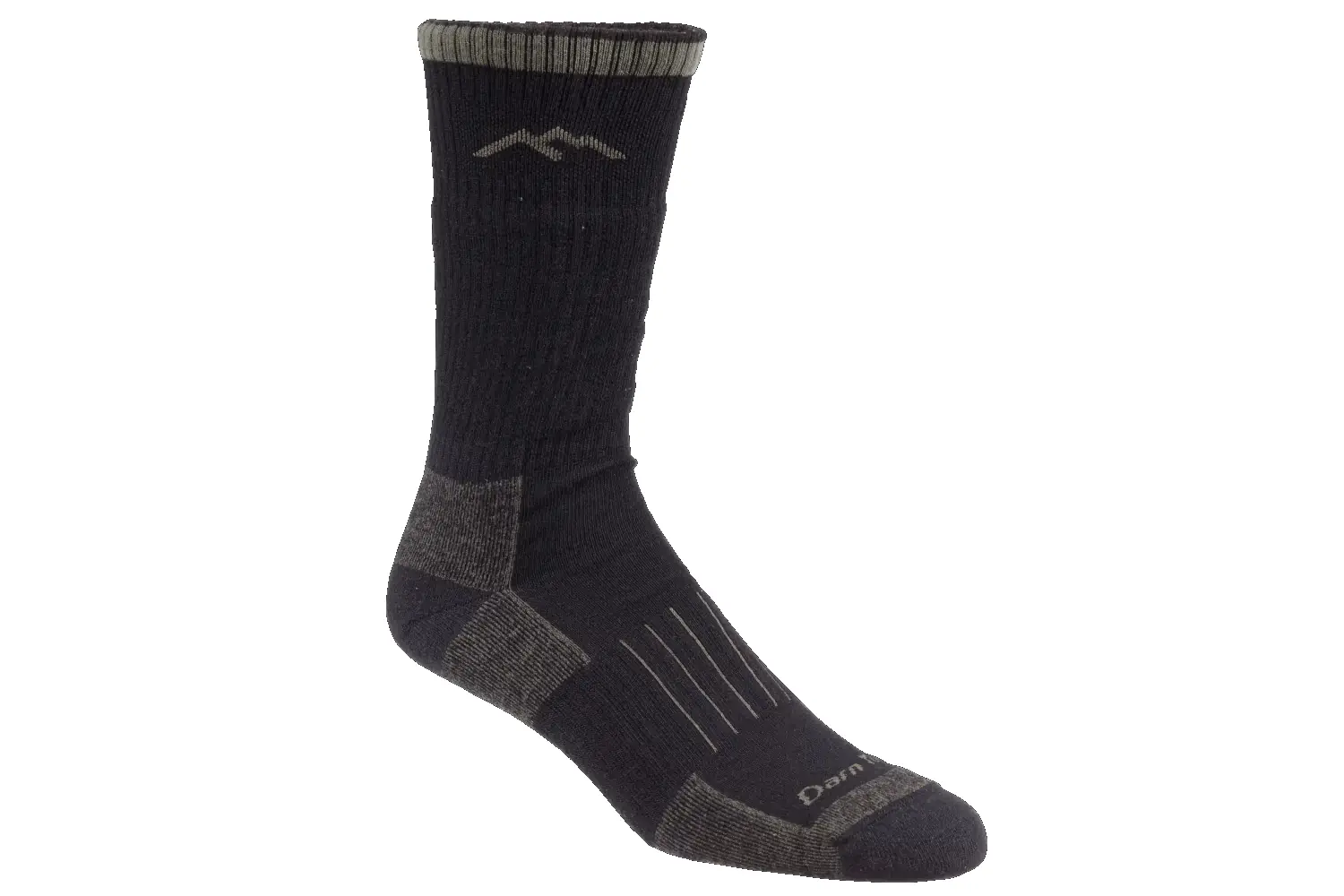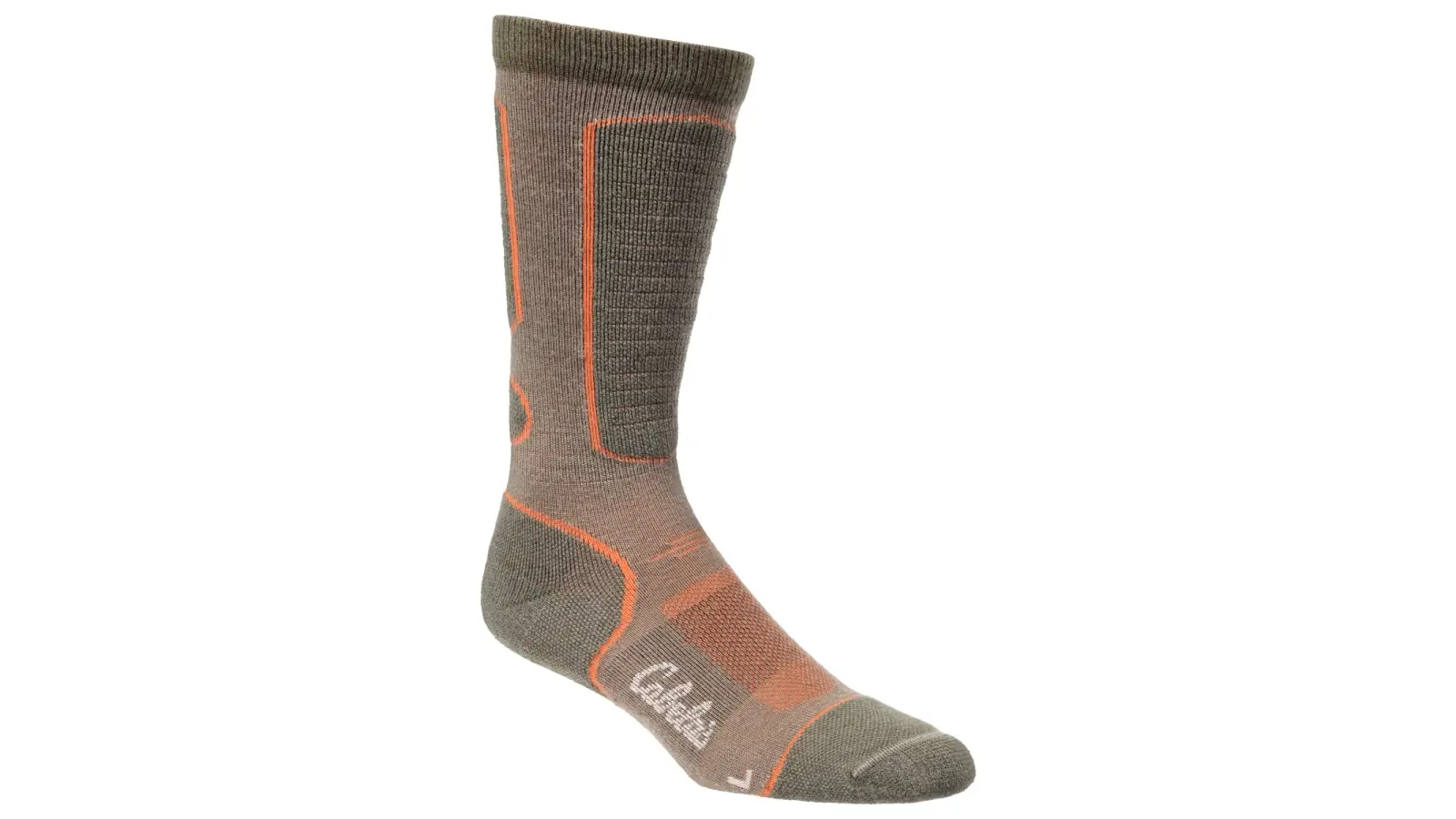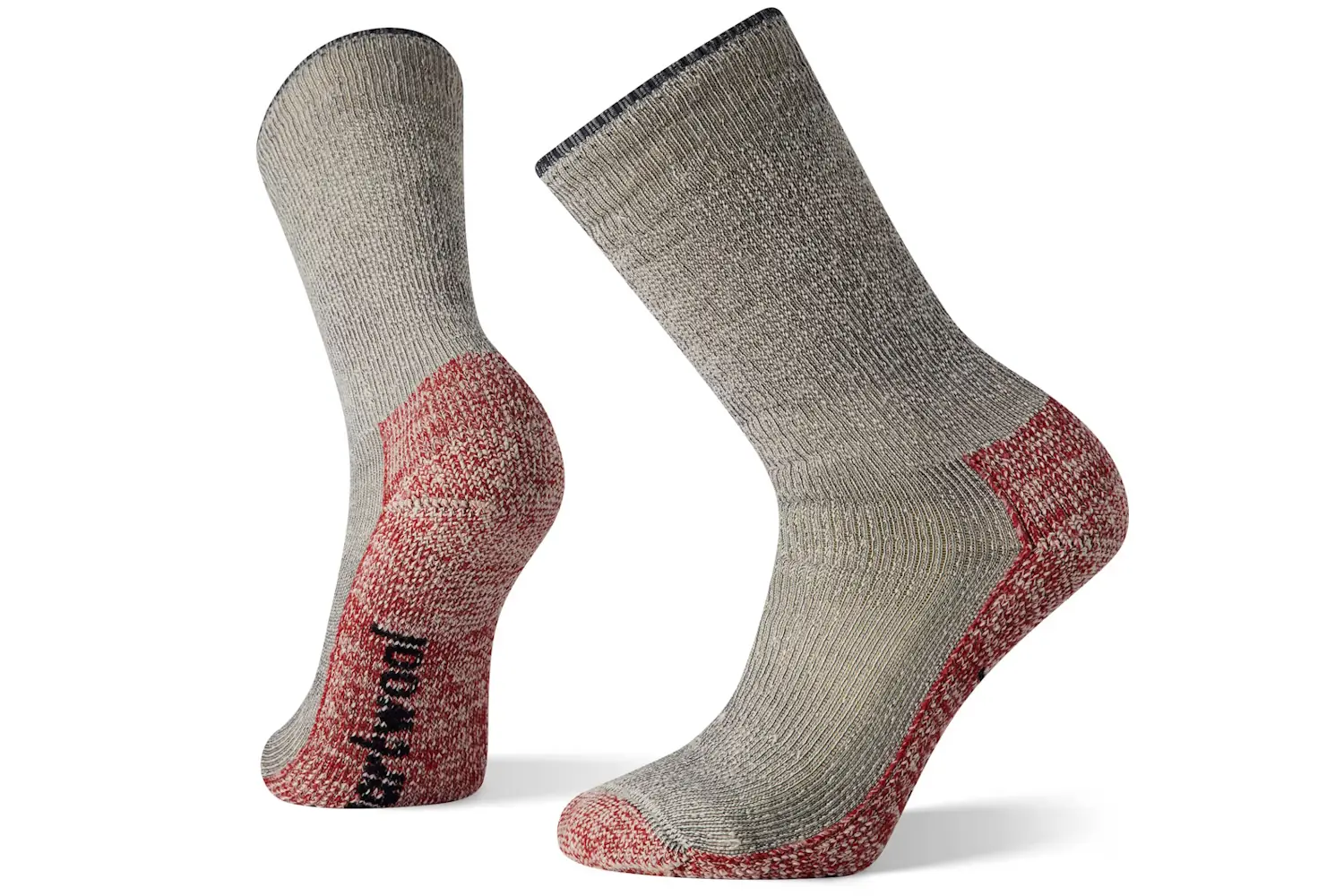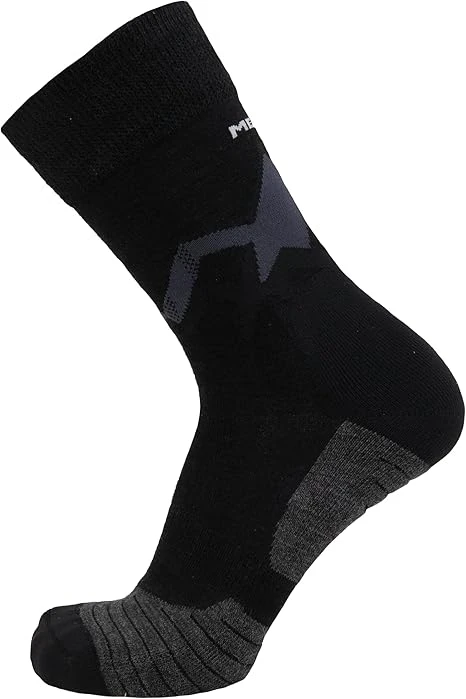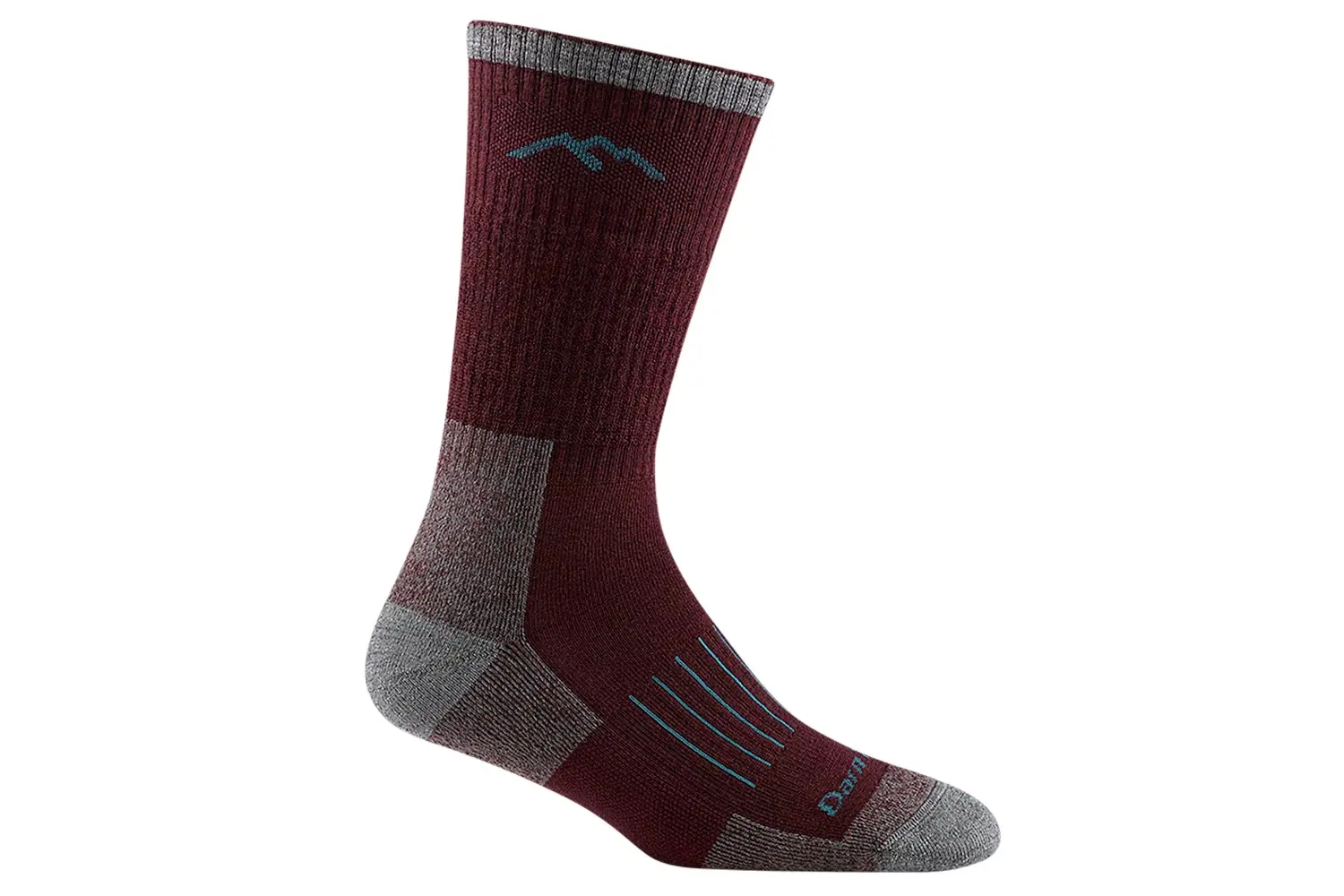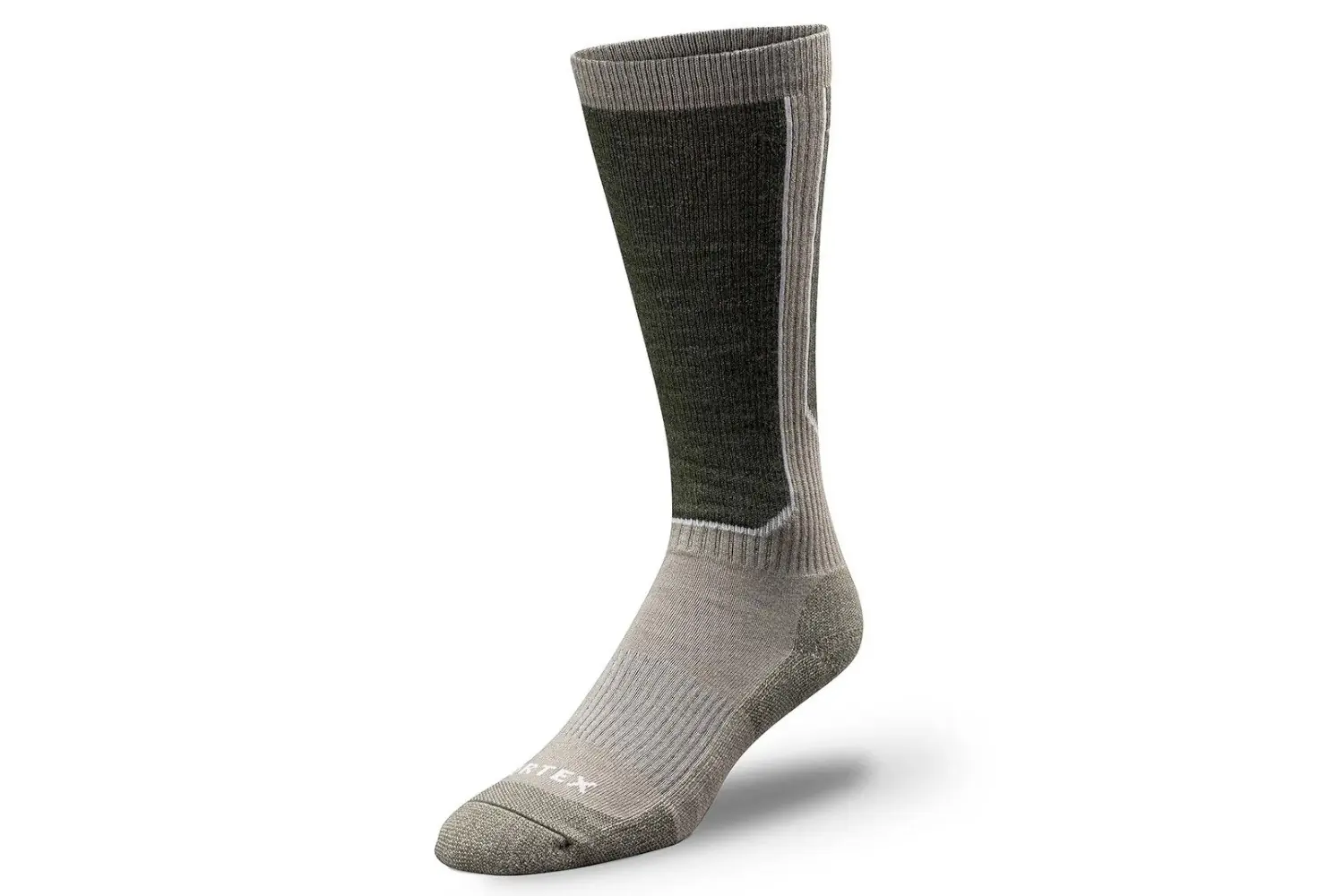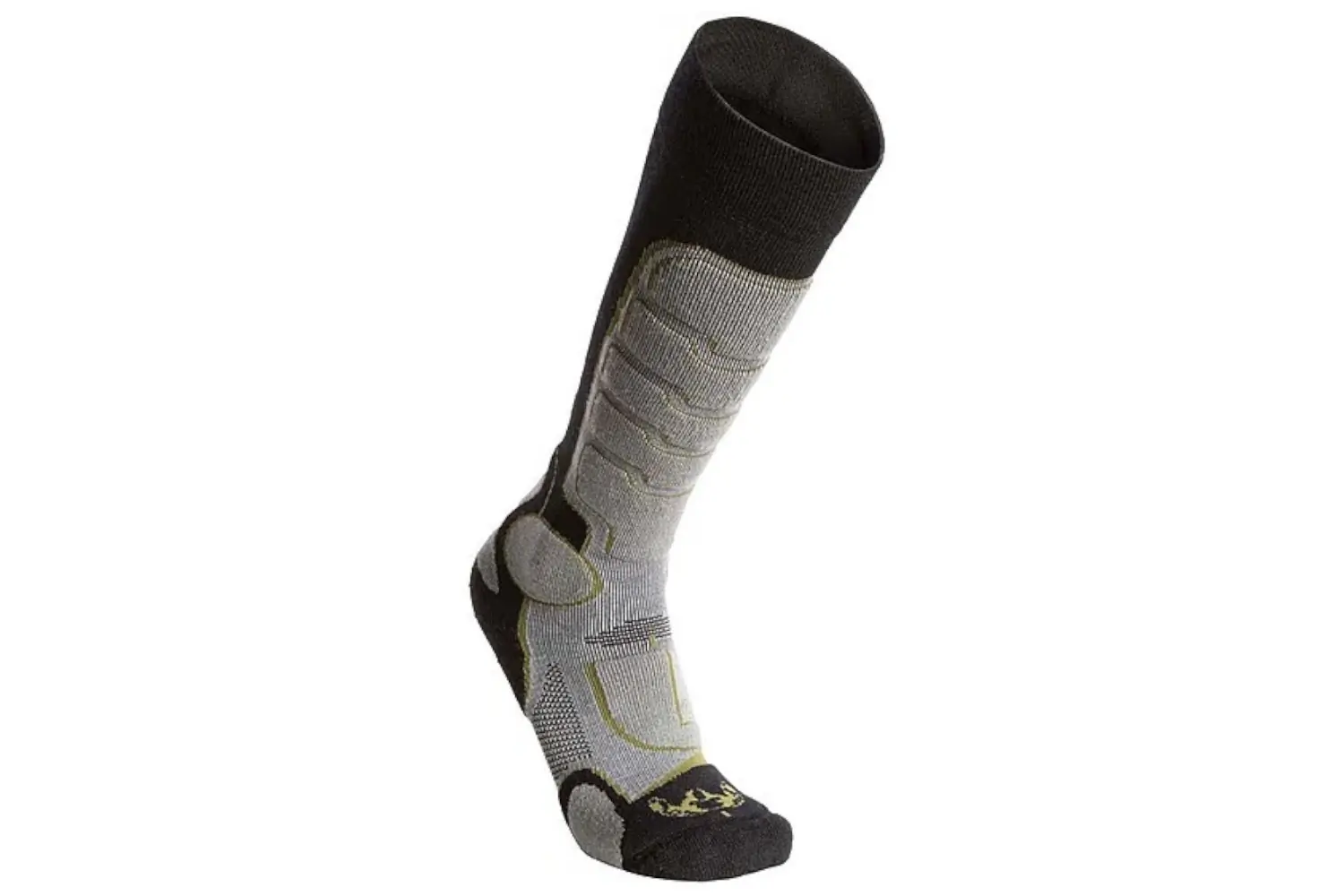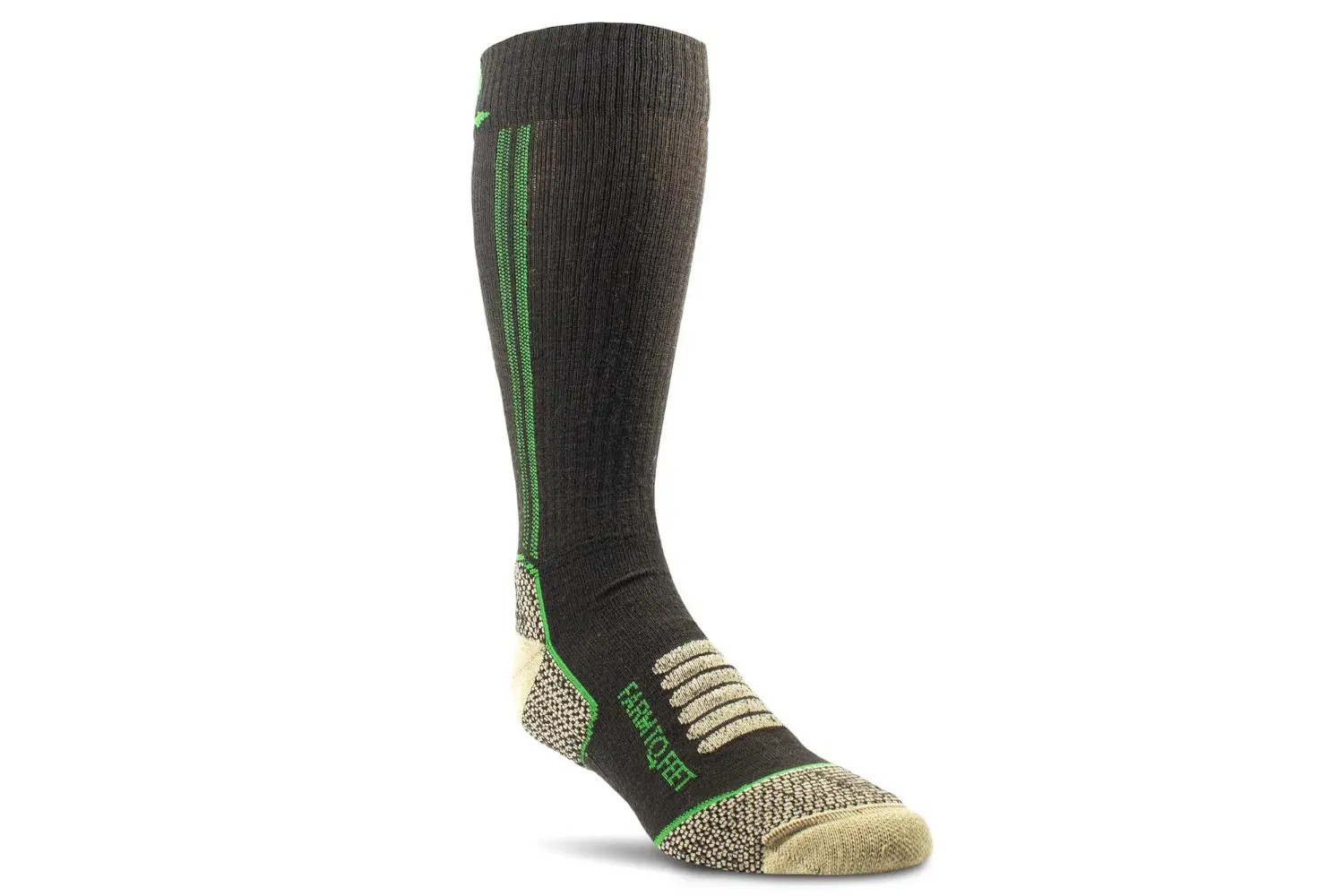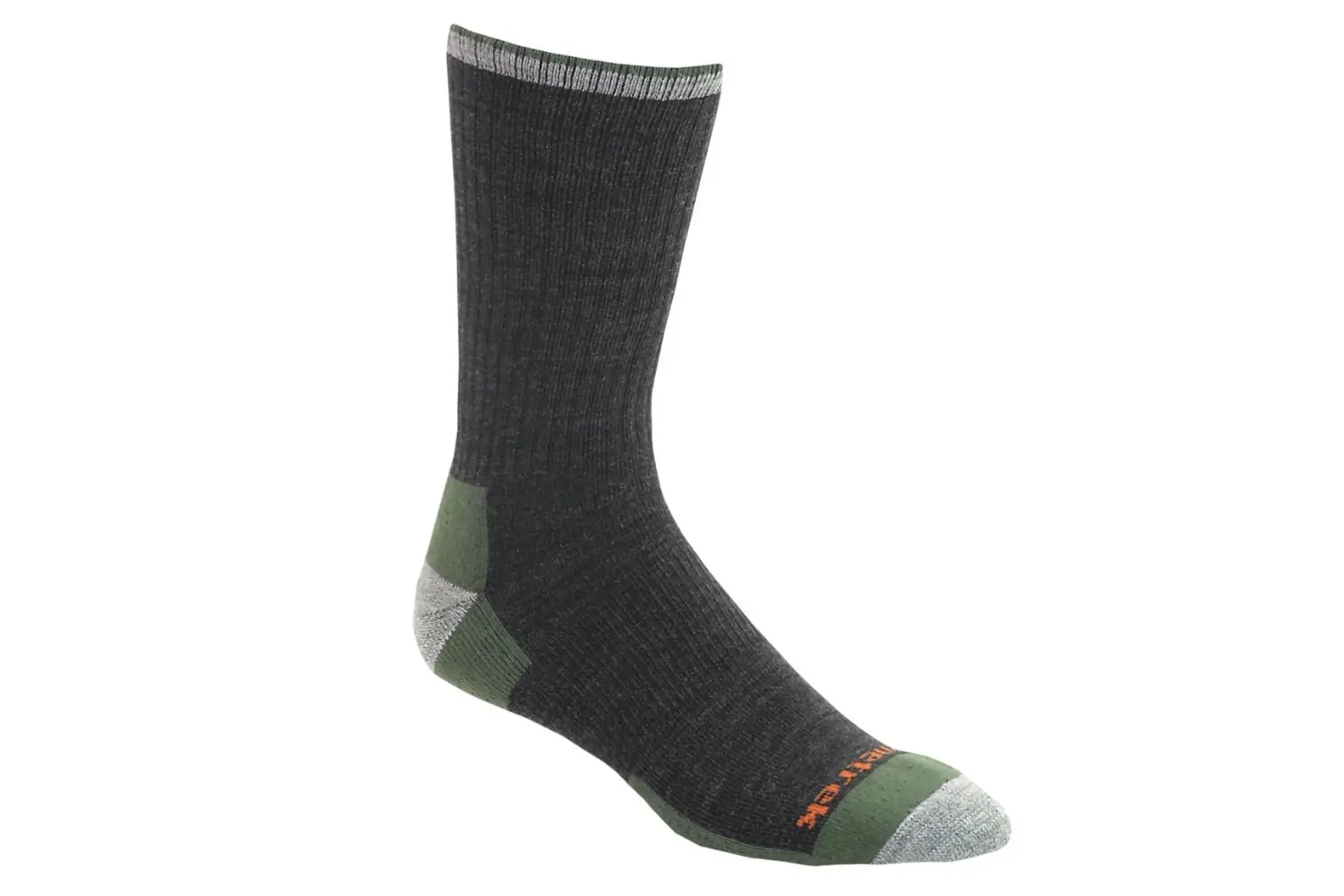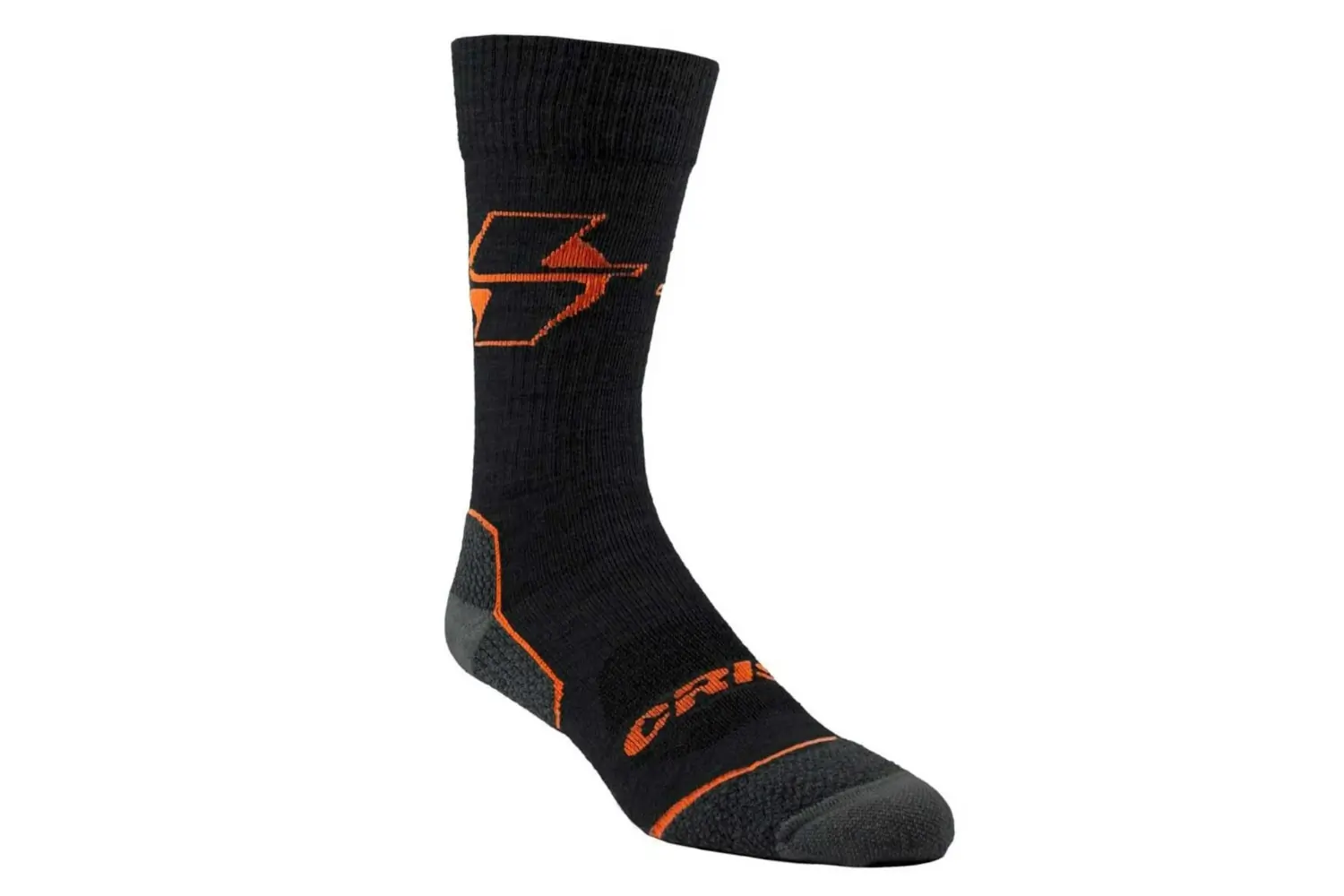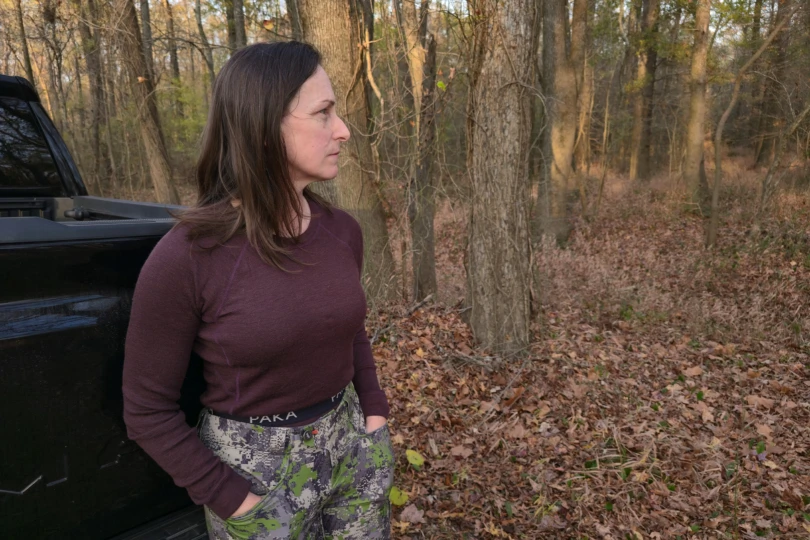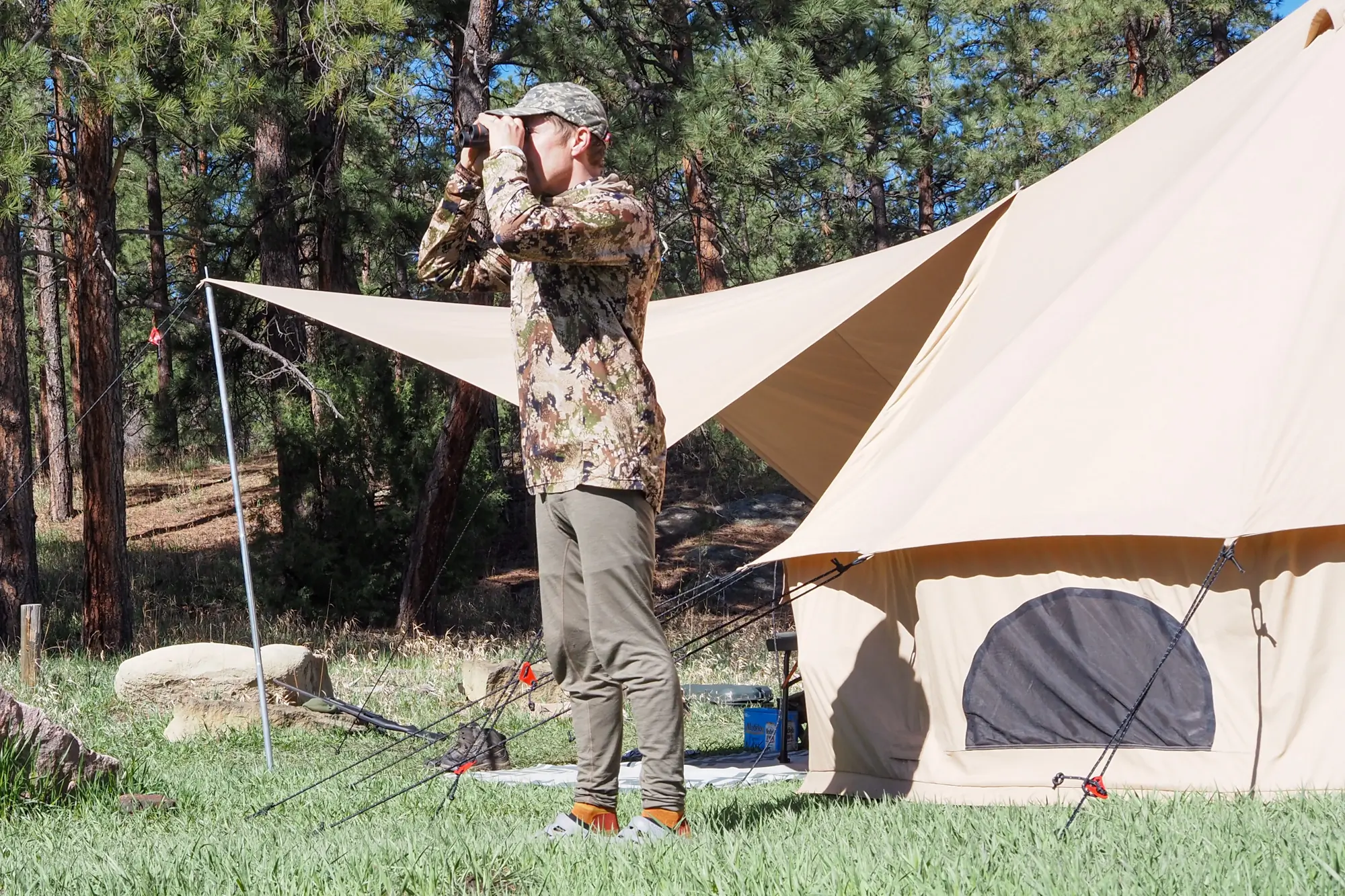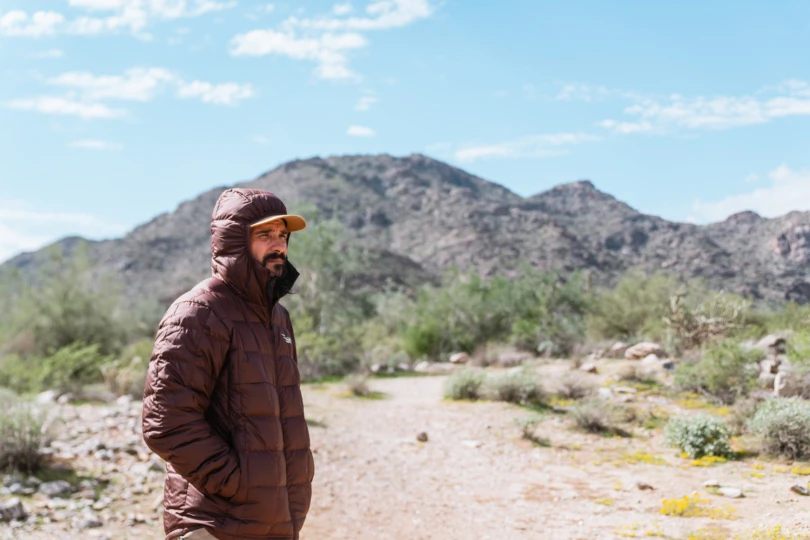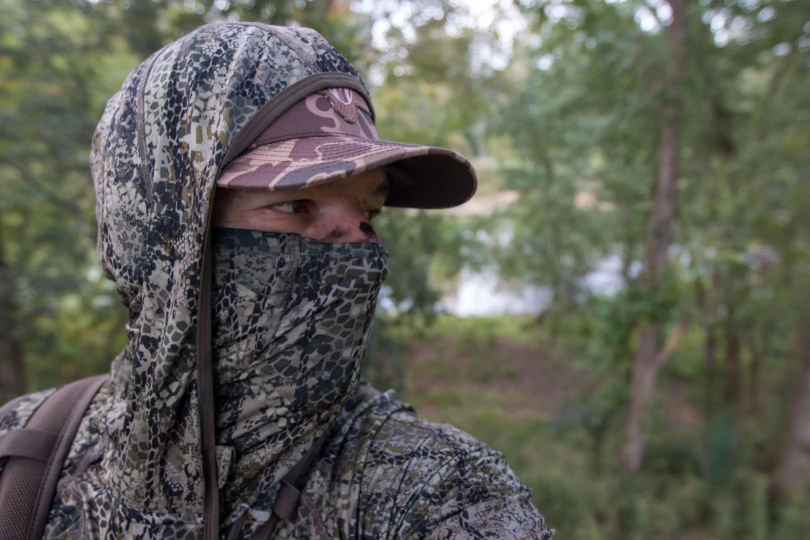As a kid, I often wore two or three pairs of cotton socks topped with a super-thick wool sock. It was a very inefficient system and did more harm than good. After many years, miles, and cold sits, I learned just how important good hunting socks are.
Hunting socks may not be a glamorous gear item, but they sure as heck deserve your attention. Cold or sore feet are a sure-fire way to make a fun activity miserable. You can have the best boots in the world, but if you’re not wearing the right things underneath them, cold, blistered feet are in your future.
Between comfort, moisture mitigation, and keeping you warm/cool, socks are key ingredients to happy feet in the woods.
With all of that said, there are a ton of hunting sock options floating around out there. To help sort them all out, other hunters at GearJunkie and I decided to pull our top picks for 2025 together. With any luck, this list will help ease your search and put smiles on your feet come hunting season.
Editor’s Note: GearJunkie updated this guide on September 10, 2025, with the Smartwool Mountaineer Classic Edition Crew Socks taking the award for winter conditions, and the Meindl MT3.5 Lightweight Merino Socks as the perfect choice when breathability is paramount. A Price and Value section was also added.
The Best Hunting Socks of 2025
Darn Tough Midweight Hunting Sock
- Materials: 64% merino wool, 33% nylon, and 3% Lycra spandex
- Season: Mid
- Sizes offered: S, M, L, XL, and XXL
Pros
- Unconditional lifetime guarantee
- Performance fit
- Has cooling vents
Cons
- Too hot for early-season hunting
Cabela’s Instinct 2.0 Wool Crew
- Materials: 63% merino wool, 28% nylon, 7% carbon nylon, and 2% Lycra blend
- Season: Mid to late
- Sizes offered: M (6-8), L (9-12), XL (12-15)
Pros
- Affordable
- Moisture-wicking and heat-retaining
- Made in the USA
Cons
- Fit could be better
Smartwool Mountaineer Classic Edition Crew Socks
- Material: 74% merino wool, 25% nylon, 1% Elastane
- Height: Crew
- Cushion: Maximum
- Moisture wicking: Yes
Pros
- Exceptionally warm for winter and cold weather
- Thick, soft cushioning for comfort under heavy loads
- Merino wool wicks moisture and resists odor
- Very durable and holds up well after repeated use
Cons
- Too bulky for warm weather or snug-fitting boots
- Not suitable for fast hikes or high-output activities
Meindl MT3.5 Lightweight Merino Socks
- Materials: 52% Polyamide, 27% Merino, 18% Polypropylene, 3% Elastane
- Season: Early season
- Sizes Offered: Large (8-10.5), XL (11-14)
Pros
- Exceptional breathability
- Manufactured with contour specific to each foot (right and left)
- Price
- Padded where you need it
Cons
- Runs a touch small
- Not for cold weather
Darn Tough Women’s Boot Midweight Hunting Sock
- Materials: 63% merino wool, 35% nylon, 2% Lycra spandex
- Season: Mid
- Sizes offered: S, M, L
Pros
- Very comfortable
- Great fit
- Unconditionally guaranteed for life
Cons
- Too hot for early-season hunting
Vortex Optics Game Trail Tick Repellent Hunt Sock
- Materials: 34% nylon, 28% merino wool, 28% acrylic, 8% polyester, and 2% spandex
- Season: Early to mid
- Sizes offered: M, L, XL
Pros
- Very comfortable
- Helps repel ticks
- Vortex VIP warranty
Cons
- We wish this went over the calf. It would add to the versatility and aid more in not only more tick-repelling real estate but also warmth.
KUIU Ultra Merino Over the Calf Sock
- Materials: 55% merino wool, 25% nylon, 15% Lycra, and 5% spandex
- Season: Early/Mid
- Sizes offered: M, L, and XL
Pros
- Shin protection
- Ankle protection
- Made with Nuyarn technology in merino wool (higher stretch, better moisture management, greater insulation)
Cons
- Expensive
Best of the Rest
- Materials: 63% US merino wool, 33% US nylon, and 4% US Lycra spandex
- Season: Early
- Sizes offered: M, L, and XL
Pros
- Lightweight but durable
- Targeted cushioning
- Entirely sourced and made in the USA
Cons
- The padding might be too much for some folks
- Materials: 36% merino wool, 35% polypropylene, 20% nylon, 6% elastic, and 3% Lycra
- Season: Summer to early fall
- Sizes offered: M, L, and XL (men) and S, M (women)
Pros
- Lightweight enough for summer
- Comfortable
- Made in the USA
Cons
- Definitely will need another sock for later in the season
- Materials: 59% merino wool, 37% nylon, and 4% Lycra spandex
- Season: Early
- Sizes offered: M, L, XL
Pros
- Breathable
- Retains shape after heavy use
- Made in USA
Cons
- Steep downhill grades tend to make the toe stretch underneath toward the ball of your foot.
The Best Hunting Socks of 2025 Comparison Chart
| Hunting Sock | Price | Materials | Season | Sizes |
|---|---|---|---|---|
| Darn Tough Midweight Hunting Sock | $28 | 64% merino wool, 33% nylon, and 3% Lycra spandex | Mid | S-XXL |
| Cabela’s Instinct 2.0 Wool Crew | $17 | 63% merino wool, 28% nylon, 7% carbon nylon, and 2% Lycra blend | Mid to Late | M-XL |
| Smartwool Mountaineer Classic Edition Crew Socks | $27 | 63% U.S. merino wool, 33% U.S. nylon, and 4% U.S. Lycra spandex | Late Season | S-XXL |
| Meindl MT3.5 Lightweight Merino socks | $25 | 52% Polyamide, 27% merino wool, 18% polypropylene, 3% elastane | Early | L-XL |
| Darn Tough Women’s Boot Midweight Hunting Sock | $28 | 63% merino wool, 35% nylon, 2% Lycra spandex | Mid | S-L |
| Vortex Optics Game Trail Tick Repellent Hunt Sock | $25 | 34% nylon, 28% merino wool, 28% acrylic, 8% polyester, and 2% spandex | Early to Mid | M-XL |
| KUIU Ultra Merino Over the Calf Sock | $39 | 63% U.S. merino wool, 33% U.S. nylon, and 4% U.S. Lycra spandex | Early to Mid | M-XL |
| Farm to Feet Ely | $26 | 63% U.S. merino wool, 33% U.S. nylon, and 4% US Lycra spandex | Early | M-XL |
| Kenetrek Yellowstone Lightweight Boot Height Sock | $25 | 36% merino wool, 35% polypropylene, 20% nylon, 6% elastic, and 3% Lycra | Early | M-XL |
| Crispi San Juan Merino Crew | $20 | 59% merino wool, 37% nylon, and 4% Lycra spandex | Early | M-XL |
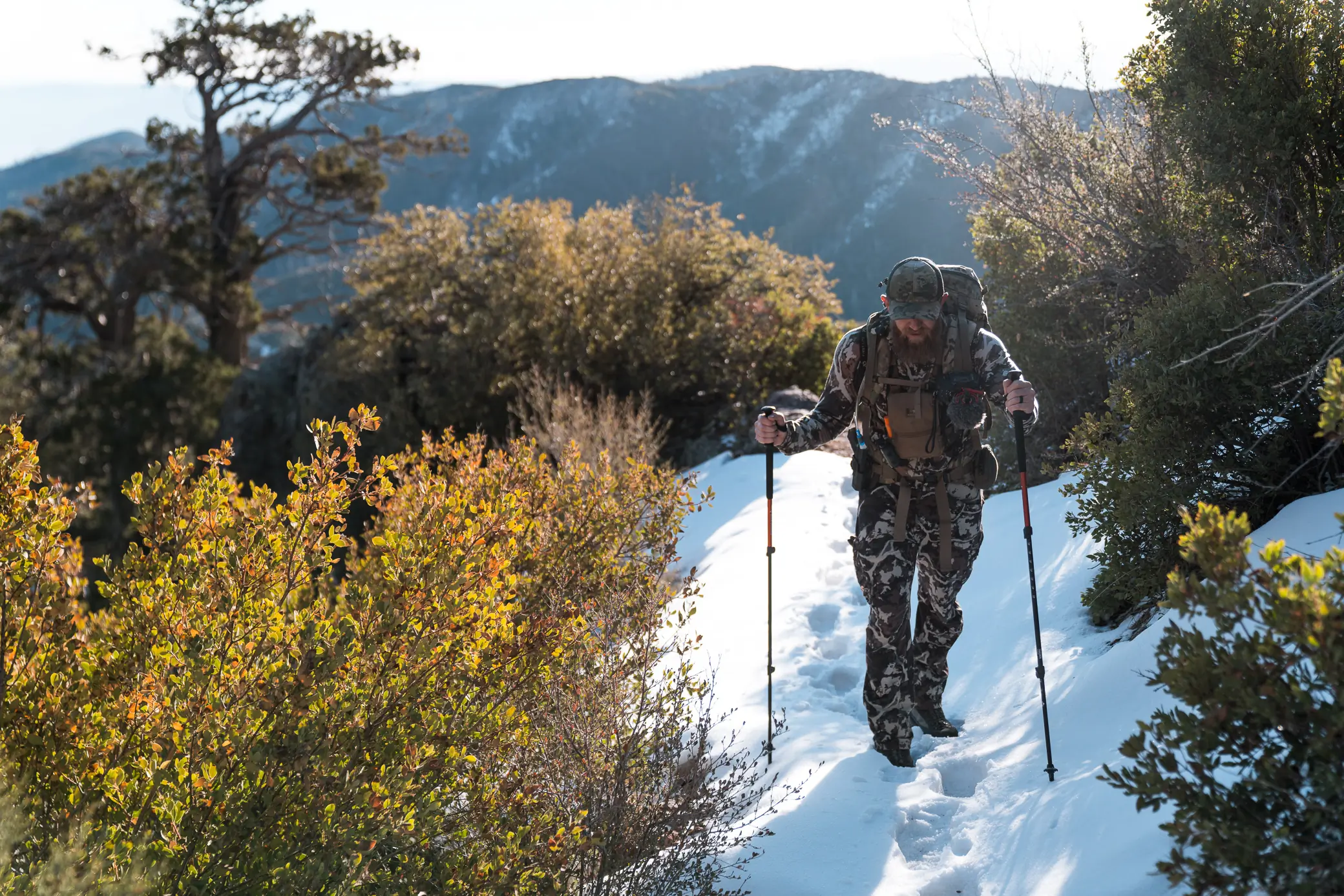
How We Tested the Best Hunting Socks of 2025
The crew of hunters at GearJunkie has been testing different hunting socks for decades. Between everyone, we’ve hunted in the desert with temps over 100 degrees, to frigid late-season muzzleloader hunts in the mountains. Different socks excel in different situations, and after all of our time in the field, we have the sock game dialed.
Our Expert Testers
Hunting is one of my ultimate passions and I’ve been backpack hunting with a smile on my face for the past 10 years. And the health of my feet is a massive part of that. Trust is a must with socks for me.
Whether I’m making a long double-digit hike into a backcountry camp, or I’m hauling out a mind-bendingly heavy load, my feet are the gateway to the finish line. In other words, I have absolutely zero tolerance for incapable socks.
GearJunkie contributor Morgan Nowels has gone through dozens of pairs of socks and found which ones he can rely on year after year. In one season alone, he chased desert muleys in August, Nebraska pheasants, ducks on the Great Salt Lake, late-season elk, and chukar in the snow-covered mountains. Through varying conditions, he developed his own thoughts on what makes certain socks stand above others.
Our Testing Process
When testing out a pair of hunting socks, there are a few things on my radar. Fit, comfort, insulation, and breathability. I’m also paying attention to how my feet feel overall while hiking, whether hot spots are present, or if my feet are sweating. Success in these areas is critical for pursuing my passions, as a bad pair of socks can cause a bad day in the field.
Of course, with my own experiences, I also took into account the experiences of trusted hunters around me. It provides a different perspective and gets me out of my own head for a bit.
Between all of the contributors, we actively hunted in the heat and sat in blinds for hours in the cold. In those types of extreme conditions, the cream of the crop rises to the top in short order.
All of our feet may be a little bit different, but the hunting socks listed above will cater to a wide range of hunters — whether they’re sitting in a treestand or packing miles into the backcountry.
Buyer’s Guide: How to Choose a Hunting Sock
Up above, I’ve laid out quite a few options for hunting socks. And aside from the top picks, there are a ton of options out there for you to choose from. So, how do you go about choosing the right hunting sock for you? Read on to find out. Once you’ve dialed in your sock game, consider taking a look at the GearJunkie guide to the top hunting boots.
Time of Year
The first thing that needs to be established is what time of year you’re planning on hunting the most. Choose a sock that fits the demands of most of your hunts. Obviously, the early season is going to be warmer than the late season. Don’t be the guy hunting with a late-season sock when it’s 80 degrees out. That’s a recipe for a bad time.
So, why not just use a midweight sock for everything to hit all of the marks? You can absolutely do that, just know that it’s a give and take. You’ll give up warmth in the late season or you’ll give up breathability in the early season. Of course, there are tricks to get by like airing your feet out often when it’s hot or starting a fire to warm the toes when it’s cold.
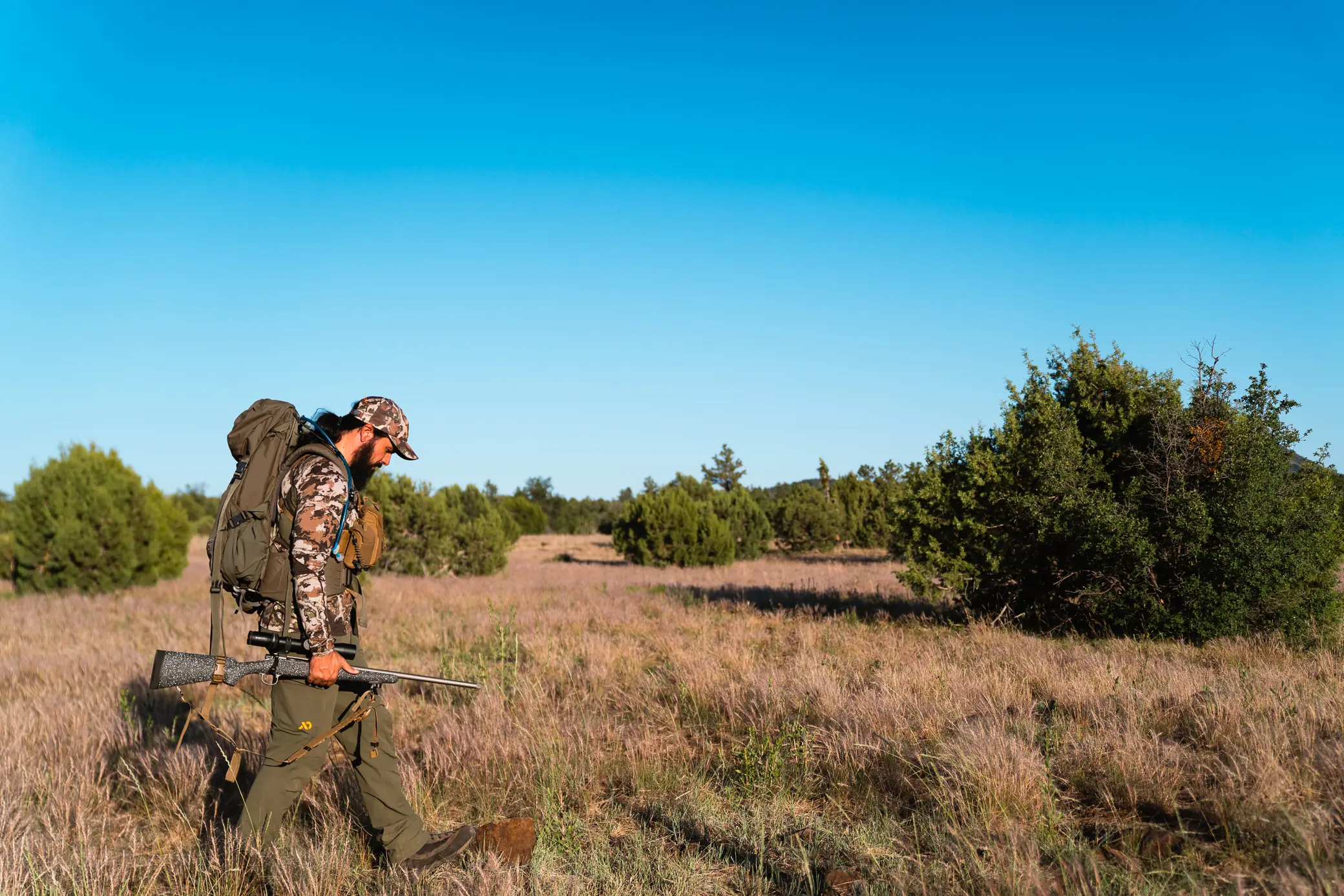



Style of Hunting
Another factor in choosing the right hunting sock for you is your style of hunting. Some hunters are more active and they prefer to stay mobile. And when you’re more mobile, you’re naturally going to sweat more. At the same time, the more methodical hunter who plays the waiting game more often than not has different needs. They aren’t going to sweat as much and will require more insulation depending on the time of year.
For the active hunter a lightweight hunting sock like the Meindl MT3.5 Lightweight Merino sock is going to be best. This is going to not only wick moisture away, but because it’s thinner, it will be more breathable and dry faster. Even when it’s cold out, if I’m moving on a regular basis, I don’t need a super thick sock to stay warm. In fact, having too thick of a sock could cause more harm than good because you’ll sweat more. Wet equals cold. You want to keep your feet dry and warm.
For more stationary hunters, sock choice is going to be temperature-dependent. In the early season, a lightweight sock will be just fine. However, when it gets cold, this is where the gap increases between the active and stationary hunters. In these cases, lean on the mid-heavyweight side. When you’re not moving as much, you’ll require more insulation simply because you’re radiating less heat. When things are cold and you’re stationary hunting, the Smartwool Mountaineer Classic Edition Crew Sock is tough to beat.
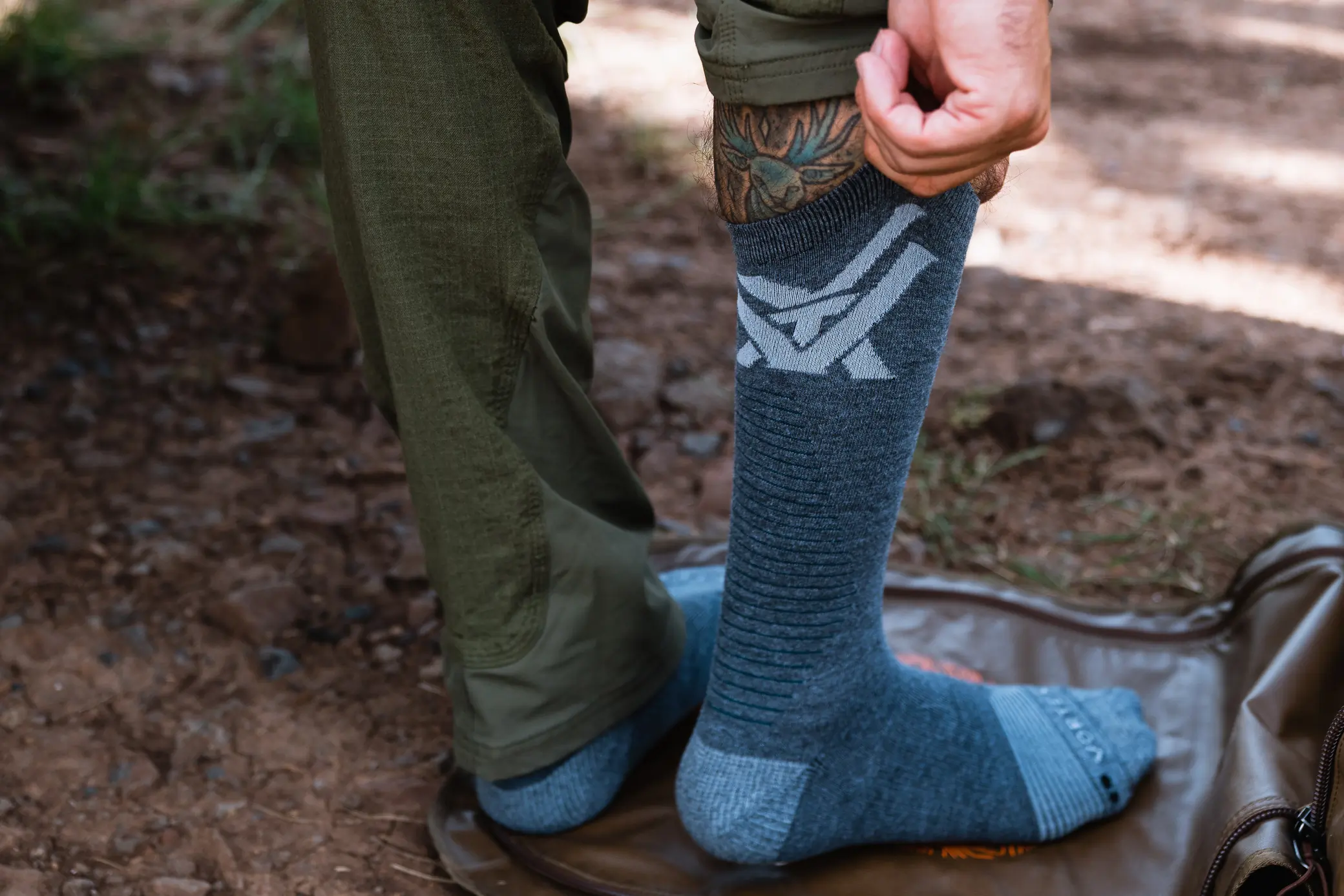



Test Before Your Hunt
This is not a cookie-cutter process. The hunting sock that your buddy loves might not do right by you. I’ve had that happen in the past. Maybe you just don’t like where a certain seam or reinforcement zone is on a sock, thus decreasing the comfort level.
With that said, test your socks before heading out on a hunting trip — even if that’s just wearing them around the house for a day. You won’t know if they’re going to work unless you try. And you don’t want to find out they don’t while out on a hunt.
Price and Value
Socks are cheap relative to the rest of the gear you need for a complete hunting kit. There isn’t nearly as much of a difference between the prices as other equipment, and it’s one of those things where it really makes sense to spend the money on the best there is. With that said, here are the different tiers of hunting socks you’ll find on the market.
Budget
When it comes to hunting socks, there aren’t any “real” budget options (under $15). Most technical socks are much more expensive per pair than the average standard sock on the market.. A budget sock would be the ones you already own or buy in a six-pack at Walmart.
Most budget socks are not technical pieces of apparel. They won’t have moisture-wicking properties, and are more than likely not wool. Many are made with cotton, which is a no-go in the woods.
Budget socks will leave you with cold feet, blisters, and will not be durable.
Mid-Tier
While the Cabela’s Instinct 2.0 Wool Crew won the “best budget” award, in the grand scheme of things, it’s a mid-priced sock at around $15 per pair. But for hunting specific socks, they’re a steal.
For under 20 bucks, it’s hard to find merino socks, but they are out there. A good mid-tier sock will be made with merino wool, providing warmth and moisture-wicking properties. They may not be as durable as others or have extensive padding for those long treks, but they can certainly get the job done.
Premium
Premium hunting socks ($25 or more per pair) are the crème de la crème and will give hunters everything they ever need. In this price range, you can find synthetic/wool blend socks like the Meindl MT3.5 Lightweight Merino socks, which provide you with fantastic breathability for warm-weather hunts.
There are also options with thick merino wool, like the Smartwool Mountaineer Classic Edition Crew Socks for those hunts that are so cold, most people stay at home watching football.
Other ultra premium options, like the $39 KUIU Ultra Merino Over the Calf Sock have some of the most advanced padding you can find, ensuring your feet stay comfortable for long backcountry hikes.
Paying a premium price allows you to hone in on the perfect sock for your needs. In the GearJunkie team’s collective experience, it’s worth it.
Frequently Asked Questions
We strongly suggest merino wool socks for hunting. Merino wool is fantastic at wicking moisture, retaining insulation when wet, preventing odor, and regulating body temperature. It covers the gamut of what hunters need out of a sock.
Our top pick for late-season hunting is the Smartwool Mountaineer Classic Edition Crew Socks. The socks you need for hunting in cold weather ultimately depend on your hunting style.
We don’t recommend layering socks for hunting unless we’re talking about adding a sock liner underneath your regular hunting sock. Wearing too many socks is not only uncomfortable, but it also poses a risk of excessive sweating. Sweating will lead to cold feet.
We strongly recommend the Farm to Feet Ely for hot-weather hunting. This is a lightweight, breathable sock that will wick away moisture and dry quickly.
Sweaty feet are cold feet. If your feet get sweaty, we recommend drying them out — as well as your boots and socks. Starting a fire will help achieve this. If your feet are getting sweaty too often, you might want to try thinner socks, especially if you are hiking a lot. The best way of dealing with sweat is to prevent it in the first place.


The Best Hunting Boots for Men of 2025
Whether you’re hunting moose in the Yukon or wing-shooting pheasants in South Dakota, we’ve rounded up the best hunting boots of the year.


The Best Women’s Hunting Boots of 2023
From the best elk hunting boots to the warmest boots for the treestand, you’re bound to find something in our list of the best hunting boots for women.
